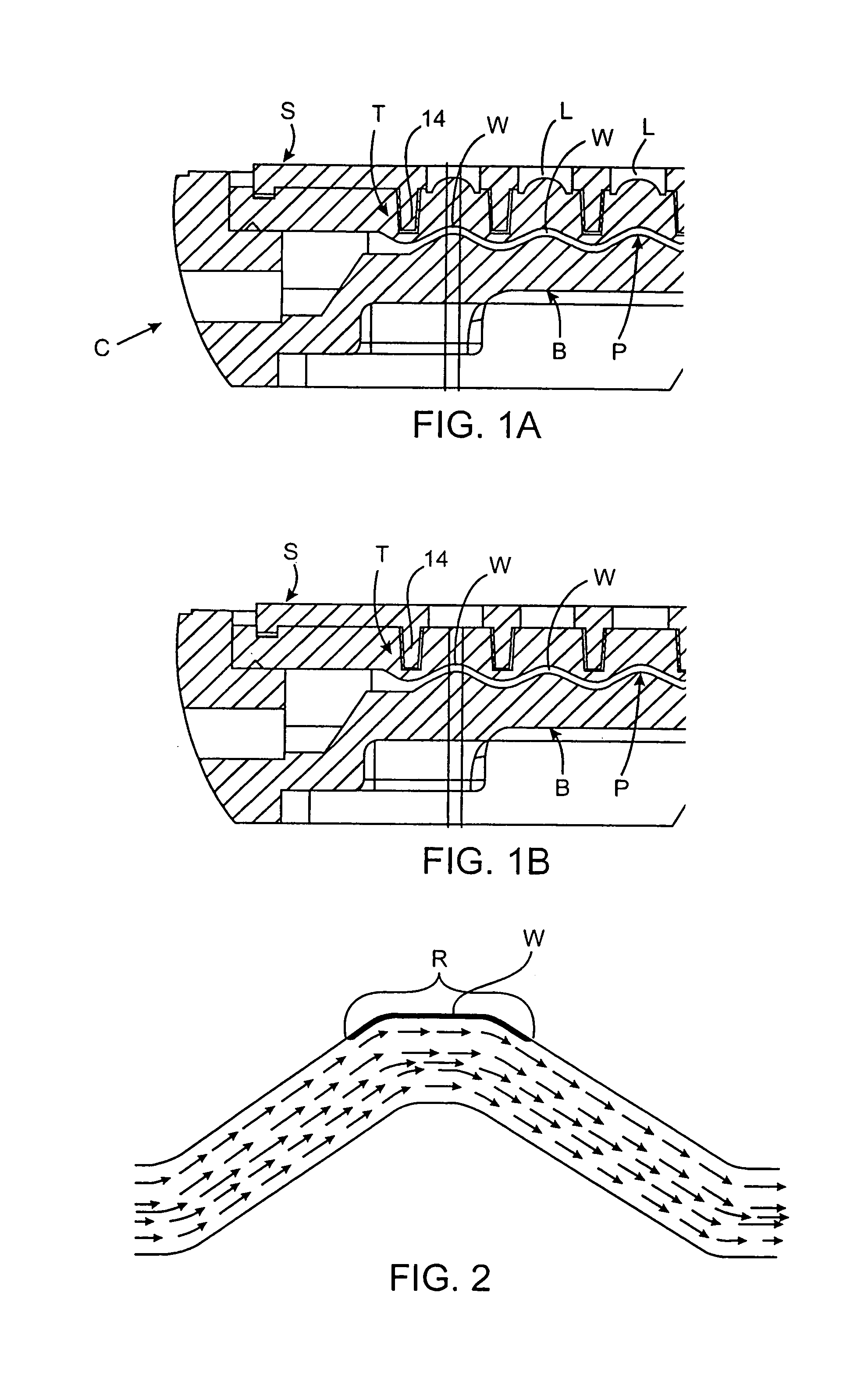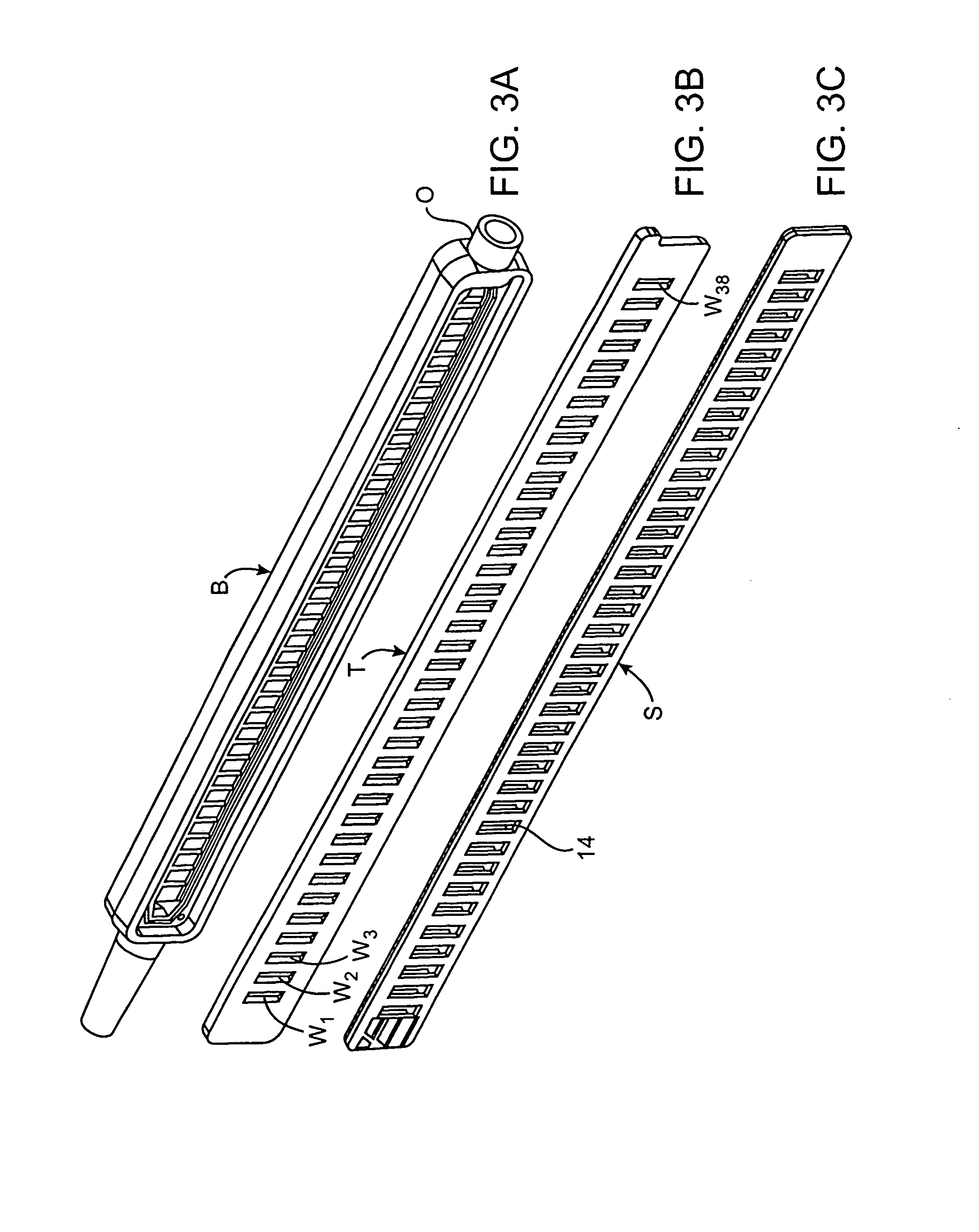Optically and fluidically enhanced in vitro diagnostic test chamber
a technology of fluid enhancement, which is applied in the field of optically and fluidically enhanced in vitro diagnostic test chamber, can solve the problems of threads in general, threads, and threads that are of a lesser volume in the majority of cases, and achieve the effect of optimizing the light collection efficiency
- Summary
- Abstract
- Description
- Claims
- Application Information
AI Technical Summary
Benefits of technology
Problems solved by technology
Method used
Image
Examples
Embodiment Construction
[0050]Referring to the side elevation section of FIG. 1A, an overall understanding of the assembled chamber C can be attained. Chamber C includes bottom B defining flow protrusions P. As will hereafter be set forth, it is the function of bottom B and flow protrusions P to provide an efficient cleansing action to the individual wells W containing the desired reactants R To aid in minimizing light carry-over, bottom B is made from a material, which absorbs light. We prefer the use of an opaque material that absorbs light as distinguished from materials, which in any way may be reflective.
[0051]Overlying bottom B and spaced apart from the bottom as shown in FIG. 1 is transparent member or coverslip T. Coverslip T serves three major functions. First and when inverted from the disposition shown in FIG. 1A and 1B, individual wells W receive reactants R. Reactants R adhere to the bottom of wells W when coverslip T is inverted. (See FIG. 2).
[0052]Second, transparent cover or coverslip T per...
PUM
| Property | Measurement | Unit |
|---|---|---|
| depth | aaaaa | aaaaa |
| depth | aaaaa | aaaaa |
| angle | aaaaa | aaaaa |
Abstract
Description
Claims
Application Information
 Login to View More
Login to View More - R&D
- Intellectual Property
- Life Sciences
- Materials
- Tech Scout
- Unparalleled Data Quality
- Higher Quality Content
- 60% Fewer Hallucinations
Browse by: Latest US Patents, China's latest patents, Technical Efficacy Thesaurus, Application Domain, Technology Topic, Popular Technical Reports.
© 2025 PatSnap. All rights reserved.Legal|Privacy policy|Modern Slavery Act Transparency Statement|Sitemap|About US| Contact US: help@patsnap.com



